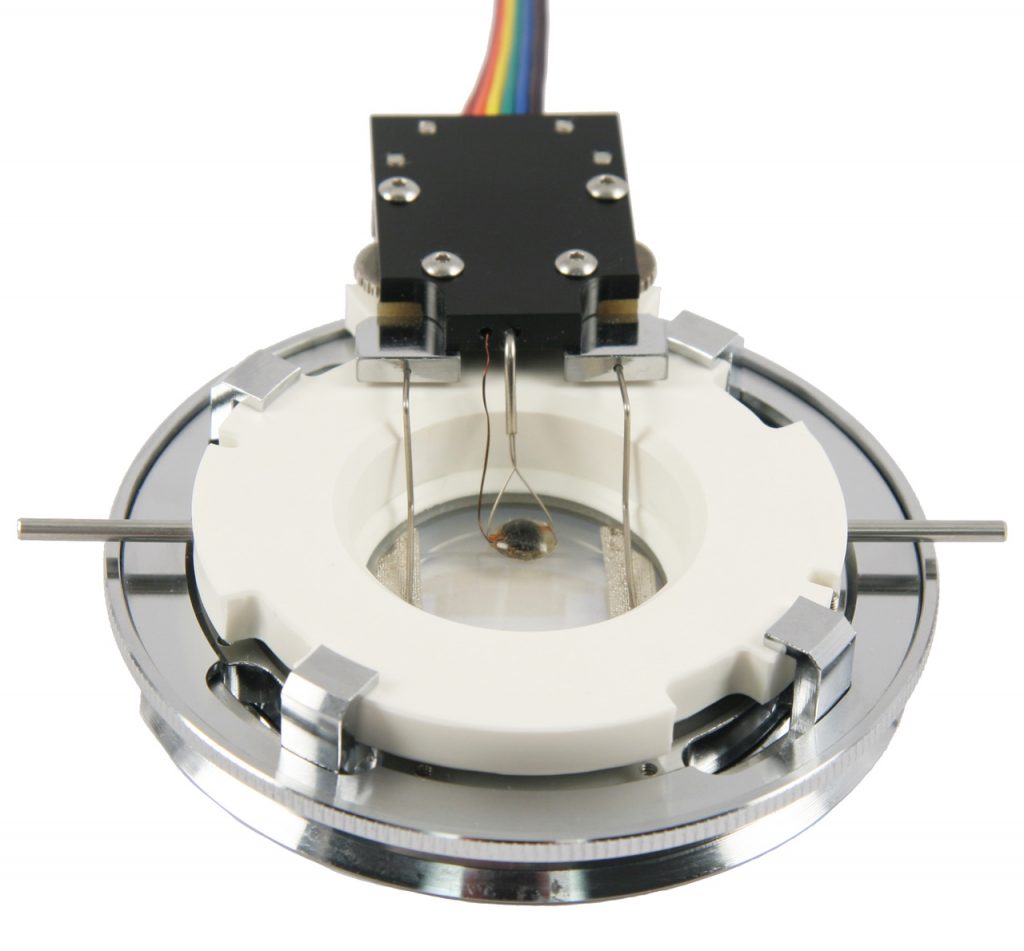Focht Chamber Systems®
The most trusted and advanced imaging chamber since 1992
FCS2®
The FCS2® is an out of the box, versatile solution for micro-environmental control that offers precision temperature and flow control that is compatible with all forms of microscopy. This system incorporates a parallel plate, high N.A. compatible, uniformly temperature controlled microscopic flow cell with a user definable specimen area for inverted microscopes. Designed for inverted microscopes.
FCS3®
The FCS3® is an out of the box, versatile solution for micro-environmental control that offers precision temperature and flow control that is compatible with all forms of microscopy. This system incorporates a parallel plate, high N.A. compatible, uniformly temperature controlled microscopic flow cell with a user definable specimen area for inverted microscopes. Designed for upright microscopes.
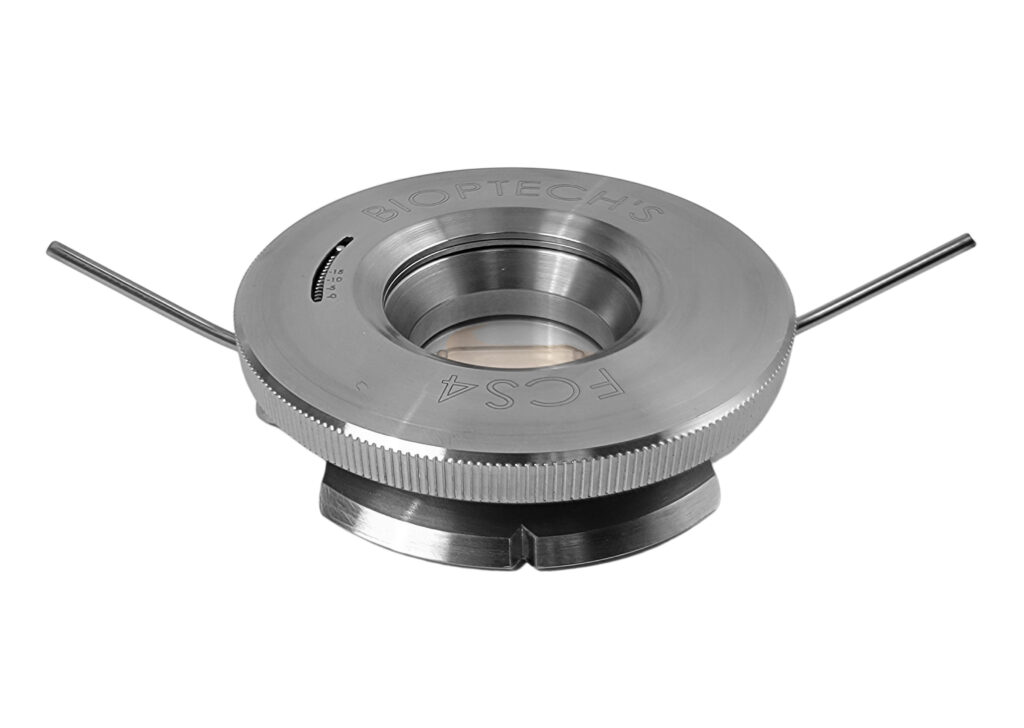
FCS4®
The FCS4® is the new variation of the FCS2® that incorporates patent pending technologies to allow for simple use by any research with no experience. The same reliable technology of the FCS2® with simplified assembly and pressure control. Designed for inverted microscopes.
Features
Advanced Imaging Compatibility
- Compatible with all modes of microscopy
- Adapts to all brands of microscopes
- Ideal for high resolution imaging
- Accommodates adherent cells, tissue or suspended specimens
Definable Flow Characteristics
- Complete control of the volume within the optical cavity
- Complete control of the separation between optical surfaces
- Complete control of the shape or profile of the flow channel
- Laminar or customized flow
- User definable shear force
Precision Temperature Control
- Control of temperature to within 0.2 of a degree
- The only uniform temperature control chamber across the specimen plane on the market
- Highly efficient rapid temperature stabilization
- Temperature control both above and below ambient
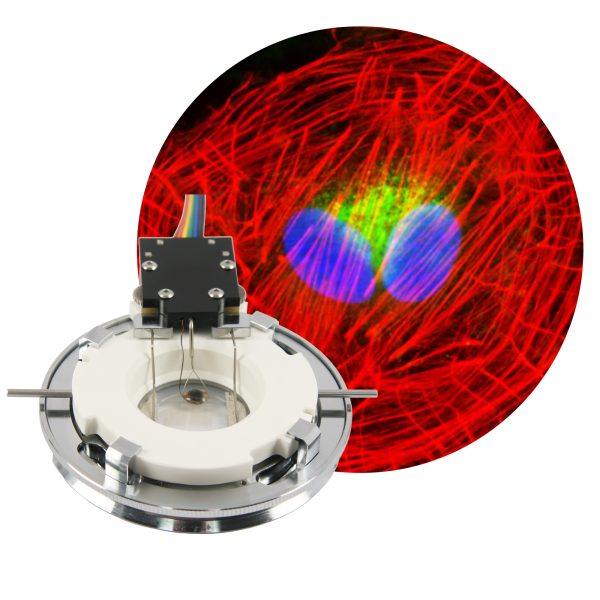
Most published flow-cell chamber system in the WORLD with thousands of publications.
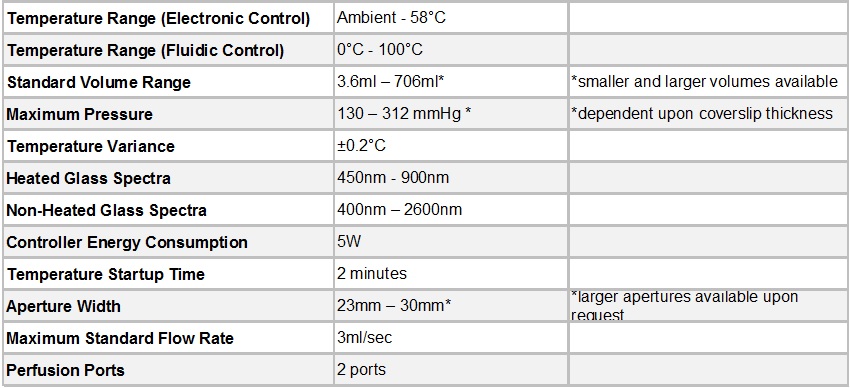
Easy No tools Assembly
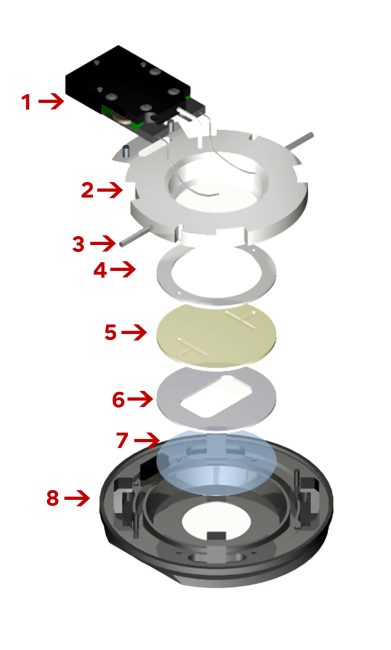
- Electrical Enclosure
Only on heated chambers. Detachable to sterilize the perfusion tubes. Includes temperature sensor and heater contacts for temperature control. - Chamber Top
Contains the perfusion tubes and is fully autoclavable. - Perfusion Tubes
14 gauge needle stock tubes for sterile perfusion. - Upper Gasket
Applies pressure to ensure seal on chamber and prevent leakage. - Microaqueduct Slide
An optical surface which integrates perfusion, temperature control, high-volume laminar flow, and koehler Illumination.
Electronically conductive coating creates uniform temperature control. - Singular lower gasket
This gasket can have any internal geometry you desire and comes in standard thicknesses from .1mm to 1mm. This allows you to define the volume and flow characteristics of the chamber. - 40mm coverslip
Surface where your cells are grown - Self locking base
Designed to assure parallel uniform closure, eliminate leaks, and broken coverslips.
Temperature controlled
dovetail base mounts to scope for stability.
*This rendering depicts an exploded view of the FCS2. The core components are similar for the FCS3 and FCS4 and can be seen on their respective product pages.
How does the perfusion work within the chamber?
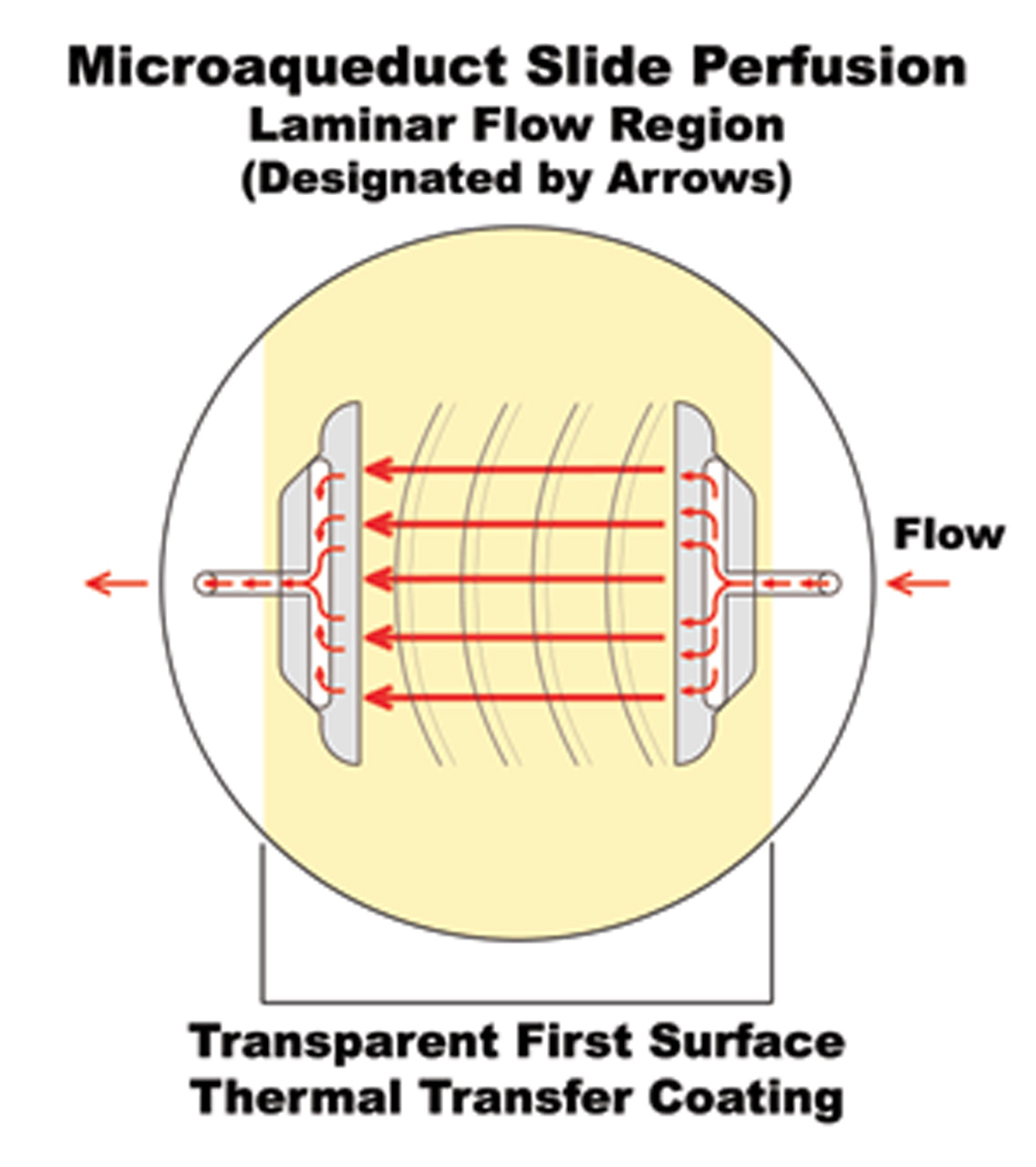
A fluid pathway is formed by separating the Microaqueduct Slide from the coverslip containing cells with a single silicone gasket. This gasket can be any thickness from 50 micron to 1mm and any lateral geometry you choose or create. Fluid access to this flow channel is made through two 14-gauge needle stock tubes protruding from the sides of the chamber top. These tubes provide fluid connection to two perfusion holes in the Microaqueduct Slide that interface two “T” shaped grooves cut into the inner surface of the Microaqueduct Slide. The “T” groove allows the media to seek the path of least resistance and become nearly laminar before flowing across the cells. This technique eliminates the need for the metal perfusion ring and additional gaskets, which are the limiting factors, required by most conventional chambers.
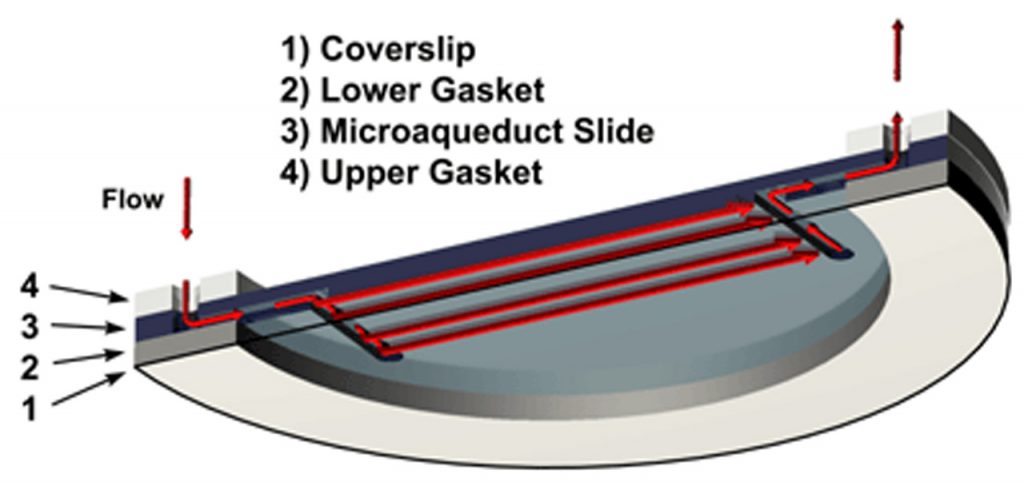
Singular lower gasket
By simply changing this one gasket you can change the volume of the chamber. This gasket can have any internal geometry you desire and can be any thickness from 0.1mm to 1mm. The drawing below shows the standard shapes of the gaskets that we include with every FCS chamber. We also include solid gaskets for you to custom fit to your application. Once you have found the shape that works best for your experiment, you can contact us to have a die made to those specifications. Examples of standard gasket outlines (below).

No tool simple assembly makes for faster and easier experiments.
Customizable flow characteristics, temperature control, dead volume, and more all with one highly versatile chamber.
With thousands of FCS chamber sales we are proud to say that even chambers built in the early 1990’s are still in use today at research facilities areound the world.
Bioptechs always has a live representatives answering phones during business hours and will respond within 1 business day to inquiries outside of business hours.
Cooling
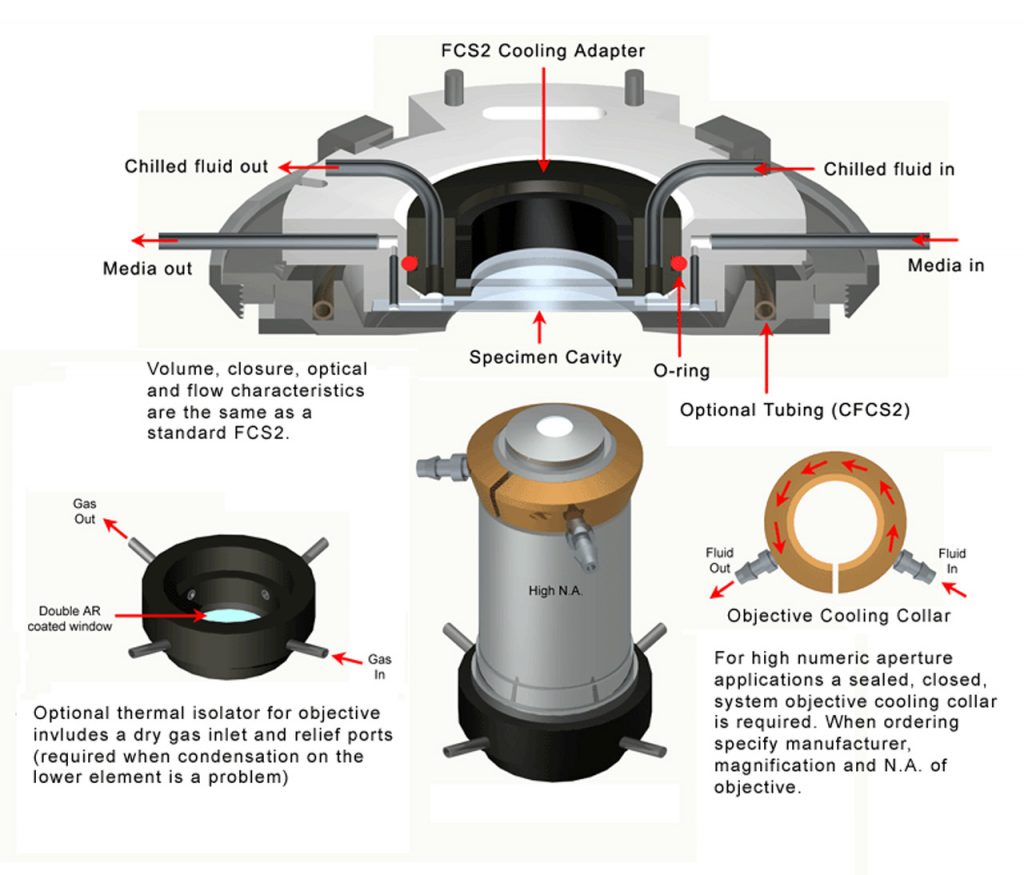
Precision Temperature Control
Precision temperature control across the specimen plane is critical to quality data. We use our patented microaqueduct slide technology to create a perfect temperature control across the coverslip without inducing harmful effects to the microscope or sample like PID controllers or stage heaters. The surface of the slide, opposite the specimen side, is coated with an electrically conductive transparent thin film of Indium-Tin Oxide (ITO) and two electrical contacts When the FCS2 is assembled two electrical contacts rest on the contacts. A temperature controller is used to pass a regulated current flow through the ITO Coating. This causes the surface of the slide to heat. The heat is transferred through the perfusable media to the cell surface on the coverslip thereby providing first surface thermal control. The self-locking base of the chamber is also temperature regulated to provide peripheral heat as well.
When considering temperature control of a sample there a few key variables to consider…

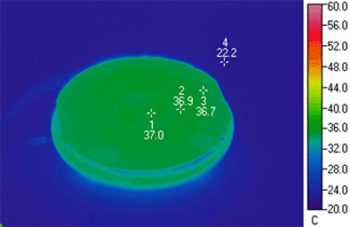
Uniformity of Temperature
This thermographic image demonstrates the uniform temperature distribution of an FCS2. Notice that the coverslip temperature is so uniform that its location, in infrared, is indistinguishable from the base of the chamber. This demonstrates the effectiveness of the ITO heated Microaqueduct Slide

Transition Time
Compared to other temperature control systems such as PID controllers and microscope boxes the FCS Chambers come up to temperature in less than 2 minutes and have an intelligent loop system that automatically re-equilibrates instantly upon introduction of any temperature variables. Read more here.
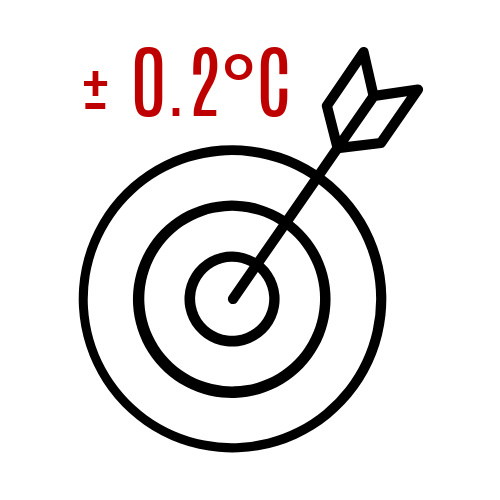
Precision
Even when coming up to set point temperature the FCS Chambers do not overshoot and harm the sample. The sample is held at a precise temperature set by the user and will not vary more than ±0.2 degree C regardless of experiment time.

Efficiency
All products designed by Bioptechs are green conscious and use approximately 5W of power. The FCS Chambers heat directly to the sample and not the stage or the entire microscope. This not only prevents damage from occurring to other instrumentation, but minimizes the labs impact.
Perfusion
Perfusion background

Applications
Add an FCS Chamber to your lab
Have any questions?

